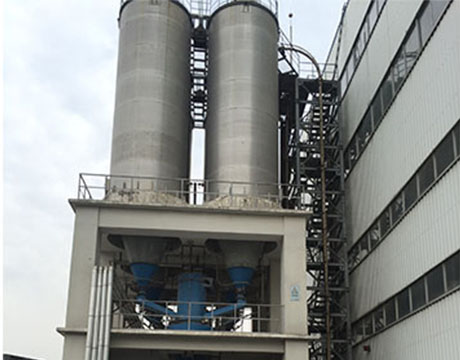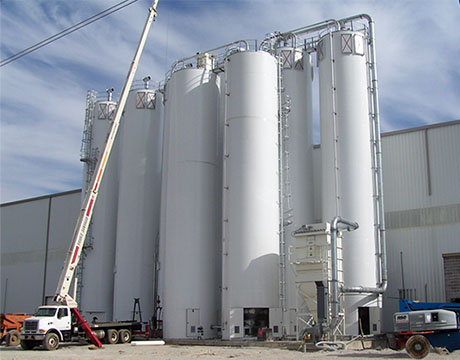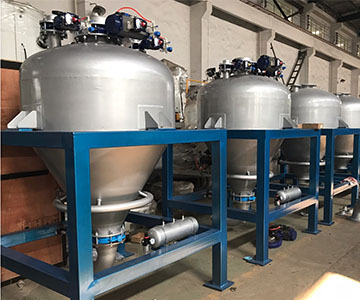Copyright © 2021 Zhangjiagang ChiYu Automation Equipment Co., Ltd. by iwonder.cn All rights reserved. Site Map
Vacuum conveying systems are an essential part of many industries, ranging from pharmaceuticals and food processing to plastics manufacturing and chemical handling. These systems are designed to move bulk materials—often powders, granules, or pellets—through pipelines using the force of a vacuum. The beauty of vacuum conveying lies in its ability to transport materials quickly, cleanly, and with minimal handling, making it an invaluable tool in modern industrial processes.
In this article, we will delve into the details of how a vacuum conveying system works, its components, and its applications. By understanding the basic principles of operation, you can gain a better appreciation for its widespread use in industries requiring efficient, reliable material handling.
A vacuum conveying system is a method of moving bulk materials through a closed pipeline using the power of suction. The system utilizes a vacuum pump to create a negative pressure, which draws material from one location to another. The material, often in powder or granular form, is typically loaded into the system via a hopper, from where it is drawn through the pipeline and deposited at the desired destination.
The primary advantage of vacuum conveying is its ability to handle materials without direct contact, which reduces the risk of contamination, minimizes product degradation, and ensures a cleaner operation compared to traditional mechanical conveying systems.

A vacuum conveying system consists of several key components that work in unison to ensure efficient material transport. Here are the major elements:
1. Vacuum Pump
The vacuum pump is the heart of the system. It creates the necessary vacuum or negative pressure required to move the materials through the pipeline. There are various types of vacuum pumps used in conveying systems, including:
Rotary vane pumps: Provide reliable performance and are commonly used for medium-duty applications.
Diaphragm pumps: Ideal for handling liquids and powders, especially when contamination must be minimized.
Liquid ring pumps: Suitable for high-volume applications with heavy-duty needs.
The vacuum pump generates the suction that draws air and material into the system, which is then pushed through the pipeline to the desired location.
2. Pipes and Hoses
Pipes and hoses form the transport network through which materials travel. Typically made of flexible, durable materials such as steel or rubber, these pipes connect the vacuum pump to the material source and delivery point. The diameter and length of the pipes are chosen based on the type of material being conveyed, the required flow rate, and the system’s overall design. Flexible hoses may also be used in areas where the conveying path needs to be adjusted or moved.
3. Vacuum Receiver
A vacuum receiver is where the material is separated from the airflow once it has traveled through the pipeline. The receiver typically consists of a chamber where the material is allowed to settle, and the air is filtered and returned to the system. Various designs of vacuum receivers are available, such as cyclonic separators, filter bags, or bag filters, depending on the material being conveyed.
4. Material Feeding System
The feeding system is responsible for introducing the material into the vacuum conveying system. This may include a hopper, conveyor, or feeder that ensures a consistent flow of material into the vacuum pipeline. The feeding system is designed to handle the specific properties of the material being conveyed, whether it is fine powders, granules, or larger pellets. In some cases, a rotary valve or airlock is used to maintain a constant feed rate while preventing air from entering the system.
5. Control Panel
The control panel is the brain of the vacuum conveying system. It regulates the vacuum pump’s operation, monitors the system’s pressure, and controls the speed of material movement. In more advanced systems, the control panel may be connected to sensors and automation systems, allowing for remote monitoring and adjustments.
6. Filters and Dust Collection Units
Filters and dust collection units are essential to maintain air quality and ensure that the material is conveyed cleanly. These components prevent the release of airborne particles and contaminants into the working environment. Depending on the type of material being conveyed, a variety of filtration systems may be used, including cartridge filters, HEPA filters, or cyclonic separators.
The operation of a vacuum conveying system can be broken down into several stages:
Step 1: Material Introduction
The process begins with the material being introduced into the system through a hopper or feeding mechanism. The material is typically loaded from a storage bin or silo and is fed into the system in a controlled manner to ensure an uninterrupted flow.
Step 2: Vacuum Generation
Once the material is fed into the system, the vacuum pump creates a low-pressure environment by removing air from the pipeline. This negative pressure draws the material through the system’s piping network. Depending on the setup, the vacuum may be continuous or pulsed, depending on the type of material being moved and the desired efficiency.
Step 3: Material Transport
As the material is drawn through the pipes, it is mixed with air, forming a material-air mixture. This mixture flows through the pipeline to the vacuum receiver. The velocity and pressure of the air ensure that the material stays suspended and moves at the desired rate.
Step 4: Material Separation and Collection
Upon reaching the vacuum receiver, the material is separated from the air. In most systems, this is done using a separator or cyclone, which allows the heavier material to drop into a storage bin or hopper while the air continues through a filtration system. The material is collected and stored for further processing, packaging, or transport.
Step 5: Air Filtration and Recycling
The air is then passed through filters to remove any remaining dust or particles before it is released back into the environment or recycled into the system. This is important for maintaining clean air quality, particularly in environments where hygiene and safety are paramount, such as in pharmaceutical or food processing industries.

There are several types of vacuum conveying systems, each with specific advantages depending on the application:
1. Central Vacuum Systems
A central vacuum system uses a single vacuum pump and a network of pipes to convey materials to different parts of a facility. These systems are ideal for larger operations where multiple processes need to be connected to one conveying system. Centralized vacuum systems are often more energy-efficient and cost-effective but require careful planning to ensure all components are optimally sized.
2. Single-Point Vacuum Conveying
Single-point vacuum conveying systems are designed to handle material transfer from one point to another. These systems are more flexible and suitable for smaller-scale operations or industries with lower material throughput. They are ideal when materials need to be conveyed to a single storage or processing point.
3. Pneumatic Conveying with Vacuum Support
This type of system blends the benefits of vacuum conveying with traditional pneumatic conveying techniques. It is designed for applications that require higher-speed material transport or more complex conveying paths, offering the versatility of both systems.
1. Cleanliness and Hygiene
One of the biggest advantages of vacuum conveying systems is their ability to transport materials without exposure to the open environment. This minimizes the risk of contamination and is particularly valuable in industries such as pharmaceuticals, food processing, and chemicals.
2. Reduced Material Handling
Vacuum systems eliminate the need for manual handling of bulk materials, reducing the potential for human error, improving efficiency, and minimizing the risk of workplace injuries. Additionally, automation features in modern systems allow for hands-free operation.
3. Minimal Wear and Tear
Because vacuum conveying systems typically use smooth, enclosed pipelines, there is less mechanical wear and tear on the equipment, leading to longer service life and fewer maintenance requirements compared to other mechanical conveying systems.
4. Flexibility and Scalability
Vacuum conveying systems are highly versatile and can be customized to handle a wide range of materials. These systems can also be easily scaled up or modified to accommodate changes in production needs.
5. Cost Efficiency
While the initial investment in a vacuum conveying system may be higher than other material handling systems, the long-term operational cost savings—through reduced labor, maintenance, and product waste—can make them an economically sound choice.
Vacuum conveying systems are used in various industries, including:
Pharmaceuticals: For transporting powders, granules, and active ingredients while maintaining stringent hygiene standards.
Food Processing: To handle ingredients like sugar, flour, and spices in a clean and efficient manner.
Plastics Manufacturing: For conveying pellets and powders to extrusion or molding machines.
Chemicals: To safely transport hazardous or sensitive materials, reducing exposure and contamination risks.
Recycling: For handling recyclable materials like plastic and paper, particularly in systems that need to separate materials.

Vacuum conveying systems are an integral part of modern manufacturing, offering a clean, efficient, and reliable way to transport bulk materials. Their ability to operate without direct contact with the materials reduces contamination risks and enhances workplace safety. With a variety of configurations available, these systems can be tailored to meet the specific needs of different industries, from pharmaceuticals to plastics. By understanding how vacuum conveying systems work and their benefits, industries can make informed decisions that improve their material handling processes, optimize production, and maintain high operational standards.